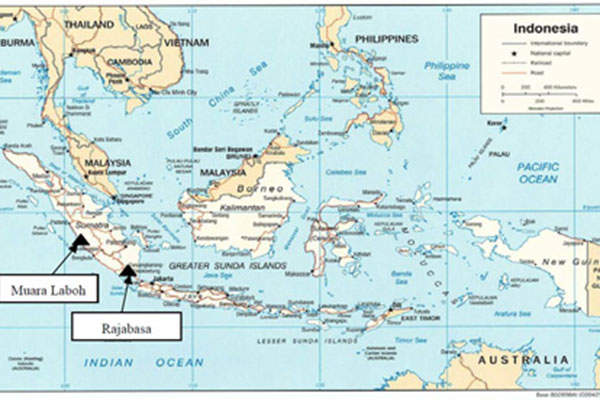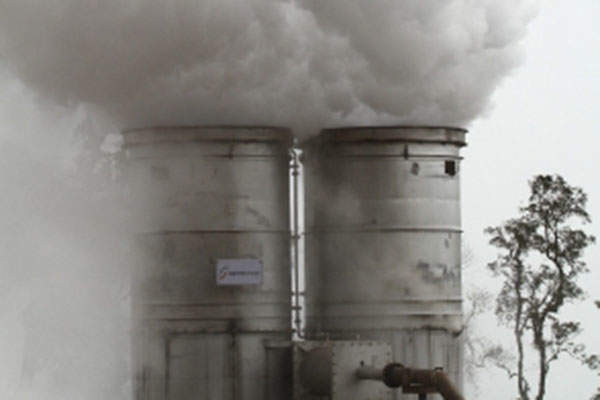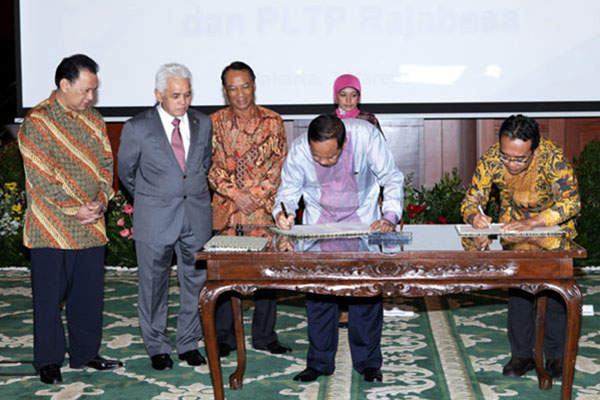Muara Laboh geothermal power plant is a 220MW greenfield project coming up in Muara Laboh, Solok Selatan Regency, West Sumatera Province of Indonesia. PT Supreme Energy Muara Laboh (SEML) proposes to develop the project as a grid-connected power plant to supply low-emission power to the Sumatera grid.
The Ministry of Finance of the Republic of Indonesia granted the government a Guarantee Letter for the project in March 2012. The exploration drilling programme at the Muara Laboh resource area began in September 2012.
The feasibility study and preliminary design of the Muara Laboh project were completed by the end of 2014. Construction of the geothermal plant was scheduled to begin in late-2015, with electricity production beginning by mid-2018.
SEML was formed in 2011 by the consortium of Sumitomo Corporation, Supreme Energy and a joint venture of International Power and GDF SUEZ for the development of the geothermal power plant. The project is estimated to generate approximately 1.73 million MWh of electricity and offset 1.17Mt of CO₂ emissions a year.
Muara Laboh geothermal power project location and development
The Sarulla Geothermal Power Project is located in the Tapanuli Utara district, North Sumatra province, Indonesia.
The Muara Laboh geothermal project will be located approximately 100km south-east of Padang, the capital city of West Sumatera. It is a part of the Liki Pinangawan Muaralaboh (LPM) geothermal working license area and is spread over approximately 62.3ha of land bordered by the Kerinci National Park.
The geoscientific data and analysis classified the Muara Laboh resource as a high-temperature (240°C or more) resource.
The proposed plant is expected to make use of the geothermal power generated by the naturally occurring heat within the earth to produce steam to rotate the open cycle steam turbines and generate electricity.
The renewable energy project will not only provide sustainable long-term electricity to the Sumatra grid but will also avoid significant quantities of greenhouse emissions produced when fossil fuels are used to generate the same amount of electricity.
Muara Laboh geothermal power plant make-up
The geothermal project is a part of the second fast-track programme launched by the Government of Indonesia in 2010 to develop 10,000MW of new generating capacity. Under this programme, approximately 4,500MW of energy is proposed to be generated from geothermal resources.
The plant will consist of two turbines of 110MW each, coupled with a generator to produce electricity from steam. It is to be developed in three phases, with the first stage including the development of 70MW.
The exploration drilling programme encompassing six wells (ML -A1, ML-B1, ML-C1, ML-E1, ML-H1 and ML-H2) was completed by the end of 2013, while well monitoring, data evaluation and reserve calculation were performed in 2014.
Power generation from the Indonesian geothermal project
Steam produced using the heat from the geothermal wells will be separated from the water-dominated resource through ‘flashing’ in steam separators. After passing through scrubbers, the steam will be directed to the steam turbine that is coupled to the generator. Any further water present in the steam is separated in a separator (brine), before passing through the turbine. The steam passing through the turbine will be condensed and re-injected into the reservoir.
Offtake of electricity generated by the Muara Laboh project
Perusahaan Listrik Negara (PLN), the Indonesian state-owned electricity utility, will purchase the power generated by the Muara Laboh geothermal power project. A 30-year power purchase agreement was signed in March 2012.
Two bidirectional meters, including a main meter and check meter, located at the substation of Muara Laboh power plant, will be used to measure the quantity of net electricity to be supplied by the project to the Sumatera grid.
Contractors involved the Muara Laboh power plant
Sinclair Knight Merz (SKM) was engaged to prepare preliminary engineering and the project development plan.




